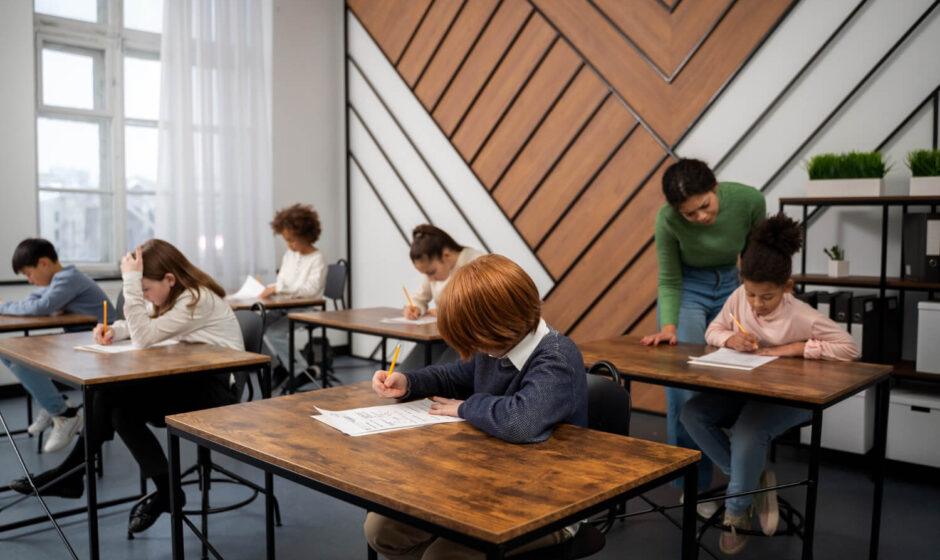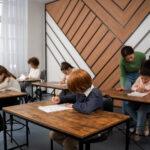In the field of education, the actual locations of learning are extremely important in determining the nature of the academic experience as a whole. The aesthetics of learning spaces, whether they be libraries or classrooms, have a big influence on students’ motivation, engagement, and general well-being. This post explores the transforming potential of intentionally designed learning spaces, highlighting how these spaces can create positive and conducive learning environments.
- Comprehending the Influence of Educational Settings:
Introduction
Providing background information to help readers comprehend how learning settings affect students’ education holistically.
The Mind-Body Connection
Examine the relationship between physical areas and mental health, focusing on the beneficial effects of well-designed environments on learning outcomes.
Motivation and Engagement
Talk about the impact aesthetics has on students’ motivation and increased involvement with learning resources.
- Enhancing Learning and Creativity in the Classroom:
Introduction
The value of designing beautiful classrooms as places that encourage innovation, teamwork, and hands-on learning.
Color psychology in education
Talk about how colors affect the classroom and how certain tones might foster concentration, creativity, and a happy atmosphere.
Flexible Classroom Layouts
Emphasize the advantages of adaptable classroom design that promote student engagement and interaction by accommodating a variety of teaching philosophies.
Interactive Educational Displays
Examine how to improve learning and decorate classrooms with interactive displays, digital whiteboards, and educational technologies.
- Libraries: A Safe Haven of Information and Solace
Introduction
Libraries serve as havens for knowledge, so it’s critical to design welcoming and attractive settings for them.
Comfortable Reading Nooks
Discuss how to make libraries more aesthetically pleasing by incorporating cozy reading nooks that offer students a welcoming area for concentrated study and reflection.
Creative Book Displays
Examine how creative shelving, themed groupings, and creative book displays enhance the overall aesthetics of library environments.
Technology Integration
Emphasize how contemporary libraries have incorporated technology to improve both the usability and aesthetics of their learning spaces. Examples of this include digital catalogs and collaborative workplaces.
- Natural Components and Basophilic Architecture in Learning Environments:
Introduction
Harmonious and revitalizing learning environments are created by combining natural materials with basophilic design principles.
Indoor Plants and Greenery
Talk about how adding indoor plants and greenery to learning spaces can enhance the quality of the air and promote a sense of connectedness to the natural world.
Natural Light and Ventilation
Stress the benefits of natural light and ventilation in classrooms, which help to create a cheery and stimulating environment.
Basophilic Design Principles
To improve the overall appearance and use of educational settings, investigate important basophilic design principles, such as utilizing natural materials and patterns.
- Interactive Educational Murals & Walls:
Introduction
The function of murals and interactive learning walls in converting boring walls into colorful teaching resources.
Educational Murals
Talk about the ways that educational murals can be used to communicate difficult ideas in an eye-catching way while also acting as creative expressions and instructional resources.
Interactive Learning Walls
Investigate the application of interactive learning walls—which are furnished with touch-screen displays and digital displays—to promote group learning and discovery.
Student-Generated Art
Emphasize the importance of including kids in the process of beautifying the area by giving them the opportunity to help create environments that are both individualized and meaningful.
- Designing Comfortable and Collaborative Furniture:
Introduction
How furniture design affects learning environments’ coziness, usability, and capacity for collaboration.
Ergonomic Furniture
Talk about how ergonomic furniture supports students’ physical health and attentiveness in classrooms and learning environments.
Flexible Seating Options
Examine the advantages of flexible seating arrangements, which provide students choices that accommodate their preferred methods of learning and encourage teamwork.
Collaborative Workspaces
Stress how well-designed collaborative workspaces encourage student cooperation, dialogue, and creativity.
- Including Creative and Cultural Aspects:
Introduction
The promotion of diversity and creativity in educational environments through the enriching influence of artistic and cultural components.
Cultural Art displays
Talk about the benefits of including cultural art displays, which highlight diversity and help students feel included.
Student Art Galleries
Examine how student art galleries might be established in educational settings to promote creativity and give students a platform for self-expression.
Including Local Heritage
Emphasize how adding elements of local heritage to learning environments makes them more beautiful and helps students feel more connected to their cultural heritage.
- Using Technology to Improve Learning:
Introduction
The ways in which educational facilities are made more aesthetically pleasing and the learning process improved by the deliberate integration of technology.
Smart Classrooms
Talk about the idea of “smart classrooms,” which include collaborative technology, interactive displays, and audiovisual aids.
Digital Learning Resources
Examine how e-books, virtual libraries, and digital learning resources might enhance the aesthetics of libraries.
Online Collaboration Platforms
Emphasize how digital technologies and online collaboration platforms may improve group projects, communication, and overall connection in learning environments.
- Building Learning Environments That Are Inclusive:
Introduction
The significance of creating inclusive learning spaces that accommodate a range of needs and skills is introduced.
Accessible Design
Talk about the fundamentals of accessible design to make sure that learning environments are inviting and useful for people with a range of physical and mental disabilities.
Multisensory Learning Spaces
Examine the idea of multimodal learning environments that may accommodate various learning preferences and styles.
Diverse Learning Resources
Emphasize how attractive educational environments may be by including a variety of learning resources that appeal to a broad spectrum of interests and backgrounds.
- Metrics for Excellence: Assessing the Performance of Educational Spaces
Introduction
Metrics and indicators to assess the effectiveness of educational space beautifying initiatives.
Student Satisfaction questionnaires
Talk about how important it is to get input from students via satisfaction questionnaires in order to determine how much beautification has affected their educational experience.
Indicators of Academic Performance
Examine the relationship between academic achievement and well-designed learning environments, taking into account variables including engagement, attendance, and grades.
Feedback from Teachers and Staff
Emphasize the need of getting input from teachers and staff in order to comprehend the wider effects of beautification on the learning and working environment.
CONCLUSION
Enhancing aesthetics in education
• Review the various aspects of creating a beautiful learning environment, such as student participation, color psychology, and adjustable seating.
• Stress the transforming potential of thoughtfully planned learning environments in fostering productive learning environments for both teachers and students.
• End with a call to action for educational institutions to adopt the art of teaching through deliberate design, creating a learning atmosphere that is both intellectually and artistically exciting.



